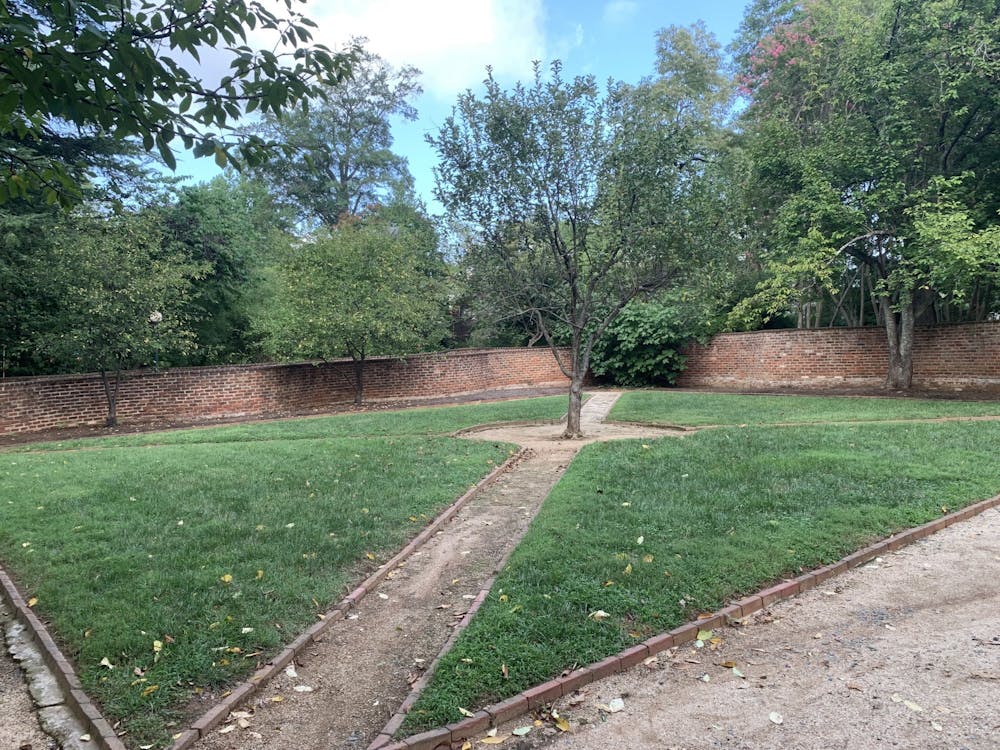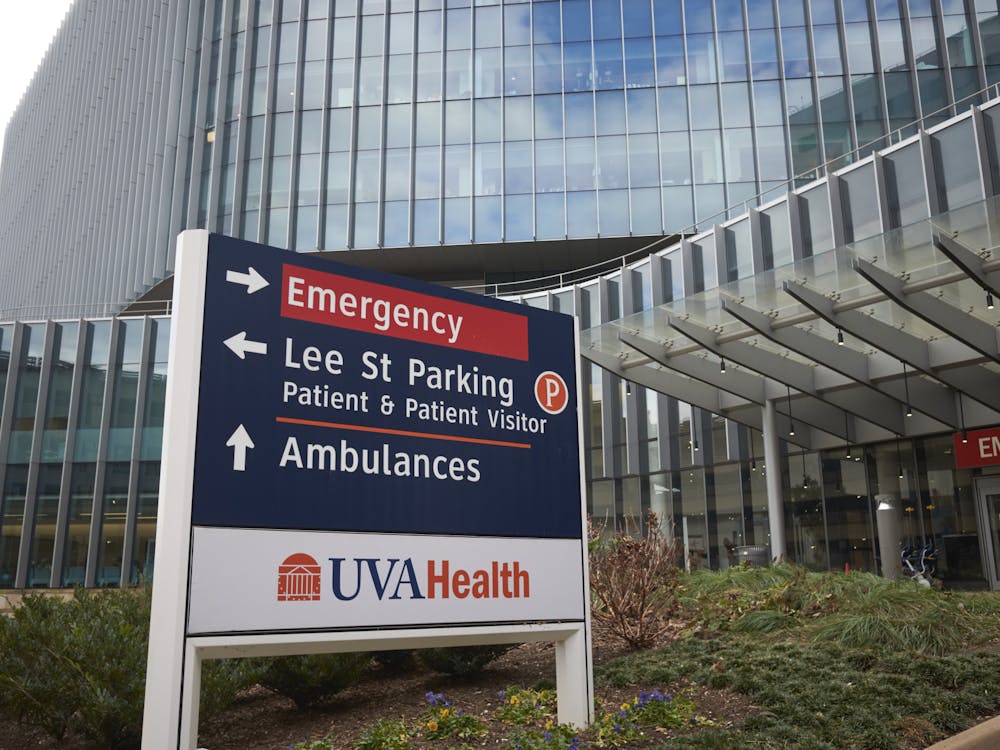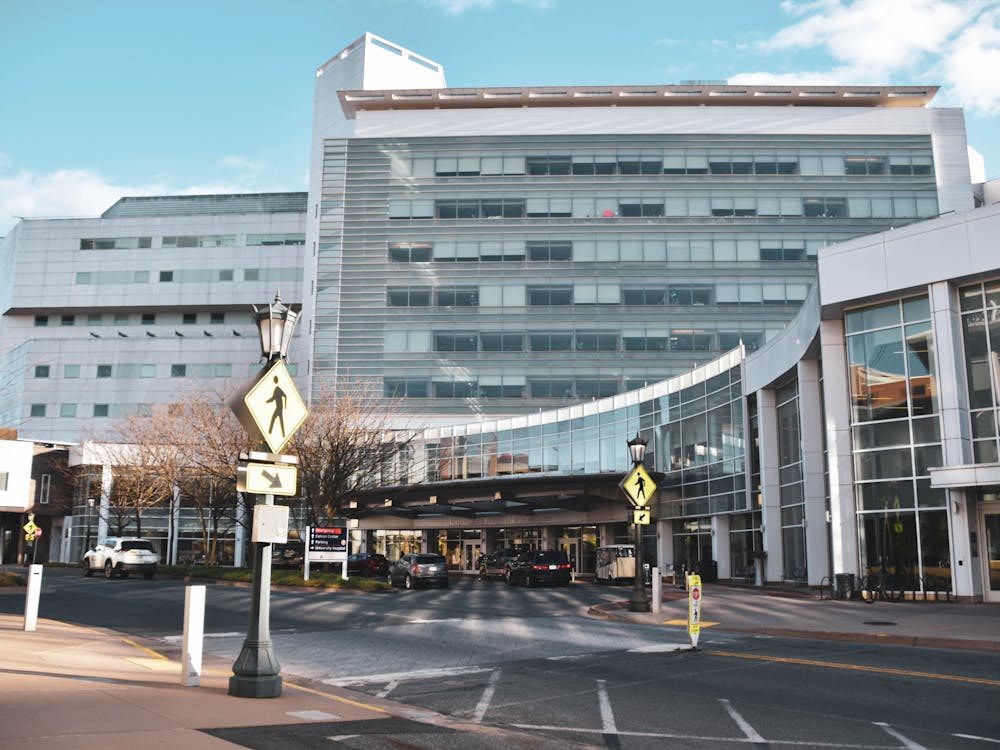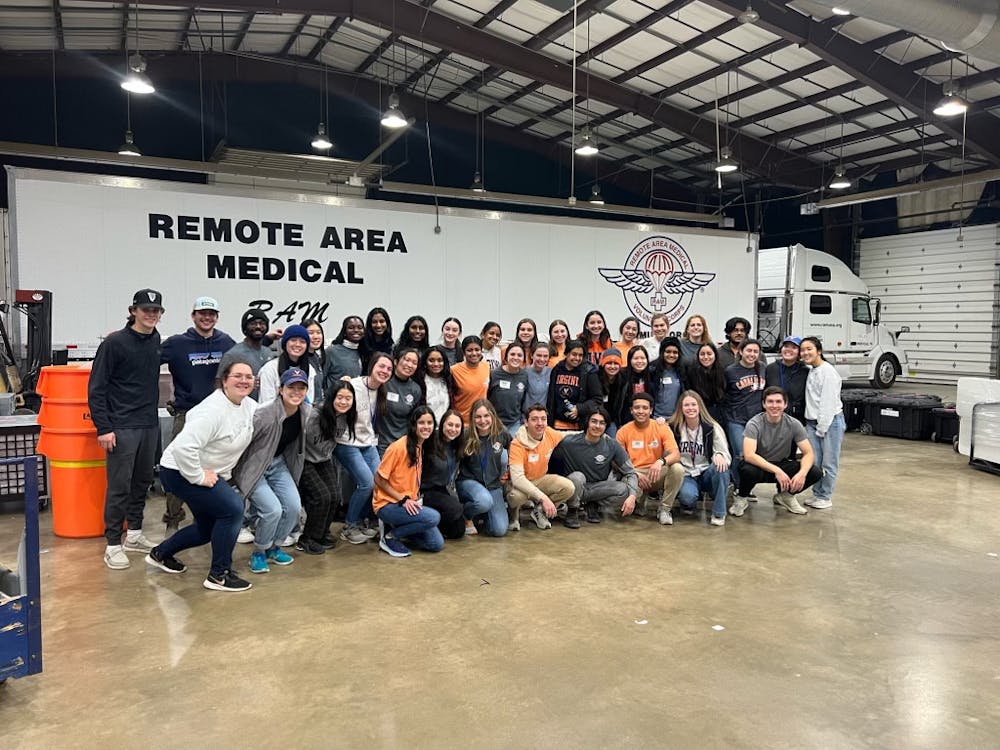The concert of natural and man-made beauty of the University’s Pavilion Gardens have enchanted visitors, students, faculty and staff for the past 70 years. Many, however, are not aware of the behind-the-scenes maintenance, history and surrounding architecture of the gardens since the University’s inception.
Architecture Prof. Richard Wilson notes that the gardens appeared first in Thomas Jefferson’s early drawings of what was then known as the Albemarle Academy. They were designed initially to be multipurpose — divided in two, with one half possibly dedicated to the public. The other half closest to the pavilion itself was generally reserved for a small kitchen garden bearing small herbs and other plants as well as a number of smaller, likely wooden quarters for enslaved persons.
Today, instead of this original split between a practical garden and a formal garden, the gardens have been transformed into a series of outdoor spaces filled with various flora, walkways and benches that are all open to the public.
Most of the small structures that used to occupy the gardens have been lost to the years, which Wilson believes indicates as an “erasure of slavery” from the University’s history, as the existing gardens do not preserve any of what likely would have been quarters for enslaved individuals. Over the course of the University’s construction and existence from 1817 to 1865, an estimated 4,000 individuals labored on Grounds, though it is not known how many specifically tended the gardens.
A View of the University of Virginia — an artistic rendering completed in 1856 by Casimir Bohn — displays some of these structures and is one of the resources used to predict how the structures may have been used.
“It is pretty evident over the years if you go back ... you can see a considerable amount of construction in the gardens,” Wilson said. “How many structures there are, we don’t know.”
Historians do know that enslaved individuals often took residence in basements below Lawn rooms, however.
Over time, most of these structures fell into disrepair and were not rebuilt, as did many other aspects of the gardens. The serpentine walls themselves collapsed and had to be rebuilt in the 1950s, despite the use of the classic wavy design that helped limit brick use and promote structural integrity. Wilson gives the example of trying to stand a sheet of paper up on end versus bending it to give the paper more strength to demonstrate this property of the walls.
A study commissioned by the University in 2018 uncovered the dark history of these walls, which were constructed as a method of hiding enslaved individuals working under grueling conditions from the privileged white students studying at the University.
By the 1950s, Wilson notes that the gardens were “really in shambles.” To repair and transform them, the Garden Club of Virginia took over and paid to rebuild the gardens into curated spaces that were open and accessible to the public. Despite the beauty this redesign brought to the natural landscape of Grounds, it failed to include any sort of recognition of the enslaved individuals who tended to the gardens in the century prior to their preservation.
Today, the gardens are managed by a group of skilled individuals — landscape architects Mary Hughes and Helen Wilson, supervisor Chris Kern and two garden staff members, Tim Andrus and Roland Von der Muhl, who are supported by nine additional workers. The group also works with arborists and turf maintenance crew members. The crew maintains the Garden Club of Virginia’s plans that originated in the 1950s and 1960s, which includes the original trees and beds of tulips and boxwoods.
A seemingly undistinguishable ash tree in the Pavilion IX garden — dubbed the McGuffey Ash tree for William McGuffey, the University’s chair of moral philosophy and political economy from 1845 to 1873 — became so decrepit that it was deemed a hazard and removed in the 1980s. In an effort to preserve the tree’s legacy in the garden and deeply adhere to the original plans of the Garden Club, the crew sent a sample of the tree’s tissue to a Cornell University lab to attempt genetic cloning. Although this failed, a graft of the tree was successfully replanted in the late ‘90s and is indeed a descendent of the original tree, according to Hughes.
Although not directly intended for conservation and propagation of native species, the gardens are watched carefully by a plant health care specialist who works with the Integrated Pest Management system. This position is currently vacant as the former specialist, Mike Henrietta, retired a few months ago. In assigning someone to this post, facilities ensure that chemical pesticides are only used as a last resort for pest control.
Additionally, the University maintains its status as a certified Bee Campus through Bee City USA, an initiative of the Xerces Society for Invertebrate Conservation. This means that it is a part of a concerted effort among universities to help fix the pollinator problem, which refers to the loss of pollinators like bees — a critical link in our food source chain — due to habitat destruction, decreases in native species and urbanization.
Looking to the future, Richard Hopkins, associate director of Grounds, said he hopes the gardens will soon become more accessible.
“The Gardens are very stable in appearance due to us holding to a design created 70 years ago,” Hopkins said. “What is changing is making the Gardens more accessible to people with mobility issues. The gravel paths are slowly being replaced by brick paths that are wheelchair friendly [and] a permanent ramp was installed in the Pavilion IX Garden making the space accessible.”
Hopkins notes that implementing these changes has been challenging due to the graded topology of the Lawn and gardens. Still, changes like these are critical for showcasing the gardens to all.
As an outdoor study space, momentary site of respite or place to reflect on history, the gardens are a natural and historical site visited by the University community. For Wilson, one of the big appeals of the gardens is the change of pace from the Lawn.
“My favorite part of the gardens…are the ones that are more irregular, that have curving walks in them because it provides a very nice contrast with the order of the Lawn,” Wilson said.
Hopkins said that the gardens are indeed a hidden treasure of Grounds.
“[Students often] haven’t experienced them throughout the year as the shadows change during the day, or how the sunlight hits different parts of the serpentine walls as the sun crosses the sky with the change of seasons,” Hopkins said.





